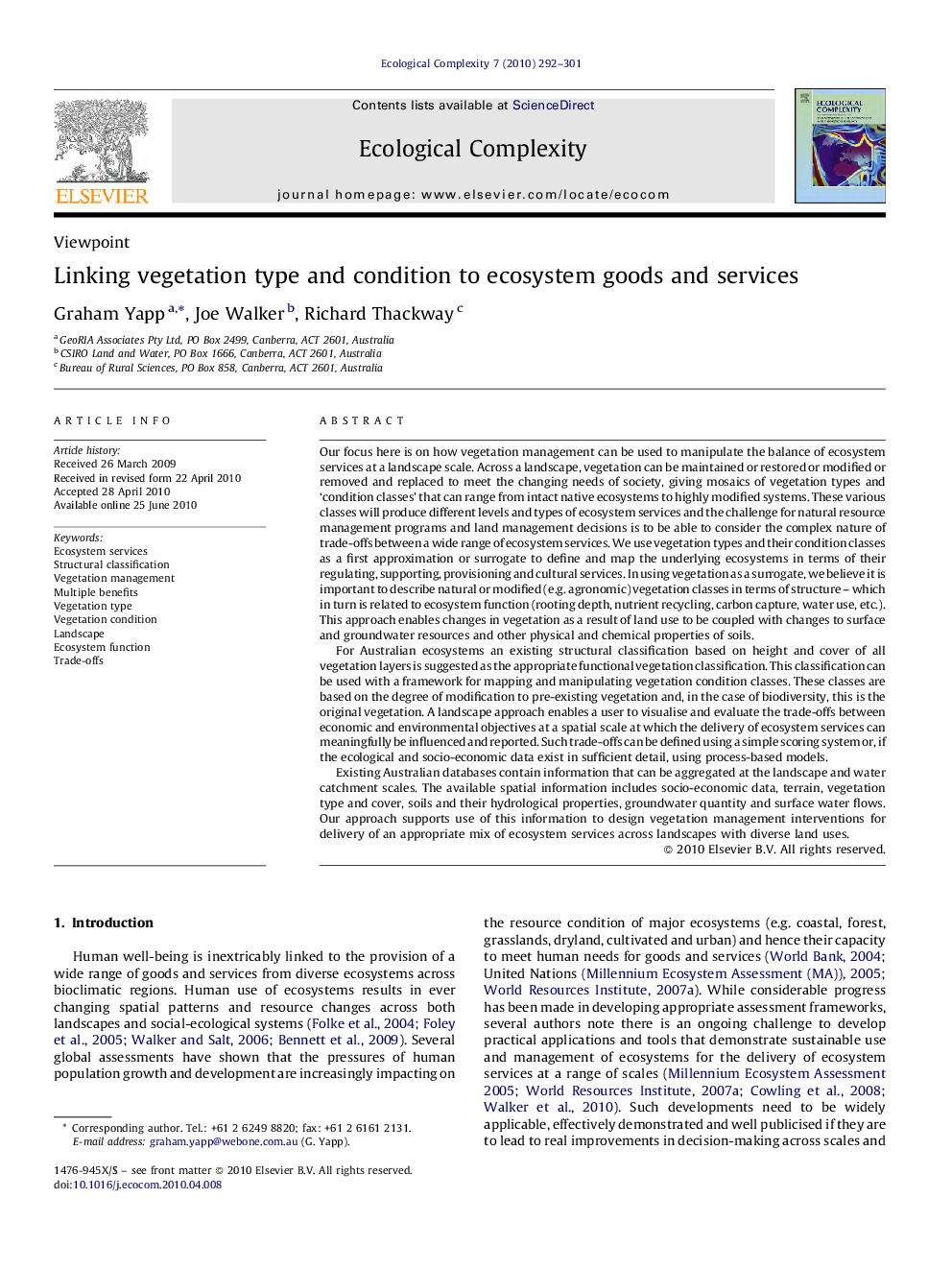| کد مقاله | کد نشریه | سال انتشار | مقاله انگلیسی | نسخه تمام متن |
|---|---|---|---|---|
| 4372676 | 1303072 | 2010 | 10 صفحه PDF | دانلود رایگان |

Our focus here is on how vegetation management can be used to manipulate the balance of ecosystem services at a landscape scale. Across a landscape, vegetation can be maintained or restored or modified or removed and replaced to meet the changing needs of society, giving mosaics of vegetation types and ‘condition classes’ that can range from intact native ecosystems to highly modified systems. These various classes will produce different levels and types of ecosystem services and the challenge for natural resource management programs and land management decisions is to be able to consider the complex nature of trade-offs between a wide range of ecosystem services. We use vegetation types and their condition classes as a first approximation or surrogate to define and map the underlying ecosystems in terms of their regulating, supporting, provisioning and cultural services. In using vegetation as a surrogate, we believe it is important to describe natural or modified (e.g. agronomic) vegetation classes in terms of structure – which in turn is related to ecosystem function (rooting depth, nutrient recycling, carbon capture, water use, etc.). This approach enables changes in vegetation as a result of land use to be coupled with changes to surface and groundwater resources and other physical and chemical properties of soils.For Australian ecosystems an existing structural classification based on height and cover of all vegetation layers is suggested as the appropriate functional vegetation classification. This classification can be used with a framework for mapping and manipulating vegetation condition classes. These classes are based on the degree of modification to pre-existing vegetation and, in the case of biodiversity, this is the original vegetation. A landscape approach enables a user to visualise and evaluate the trade-offs between economic and environmental objectives at a spatial scale at which the delivery of ecosystem services can meaningfully be influenced and reported. Such trade-offs can be defined using a simple scoring system or, if the ecological and socio-economic data exist in sufficient detail, using process-based models.Existing Australian databases contain information that can be aggregated at the landscape and water catchment scales. The available spatial information includes socio-economic data, terrain, vegetation type and cover, soils and their hydrological properties, groundwater quantity and surface water flows. Our approach supports use of this information to design vegetation management interventions for delivery of an appropriate mix of ecosystem services across landscapes with diverse land uses.
Journal: Ecological Complexity - Volume 7, Issue 3, September 2010, Pages 292–301